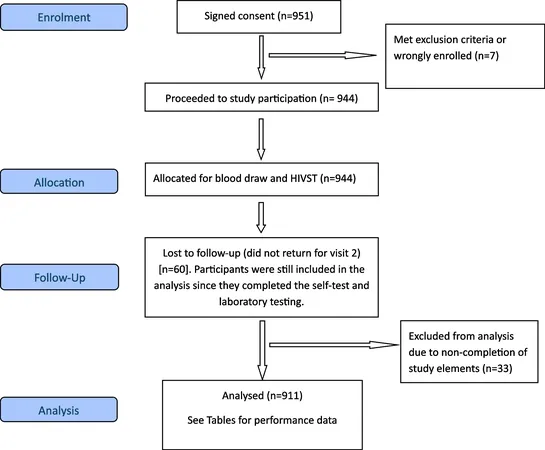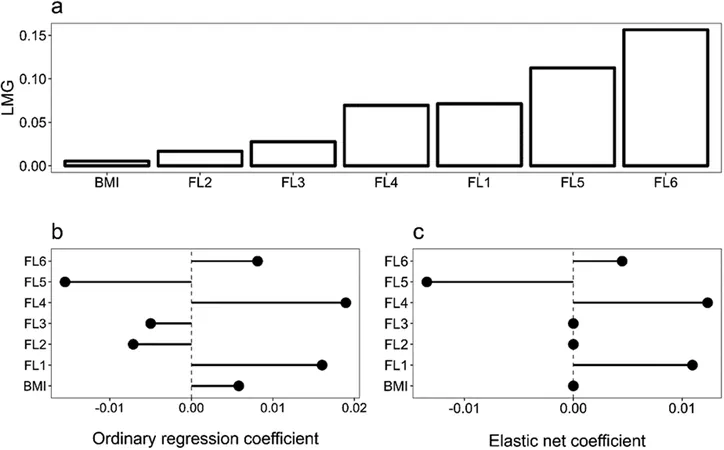
Canada Evaluates Innovative Oral Fluid-Based HIV Self-Test: A Game Changer in the Fight Against HIV?
2025-01-11
Author: Yu
In a dramatic rise of HIV diagnoses across Canada, the latest figures reveal an alarming 2,434 new cases in 2023—a staggering 35.2% increase from the previous year. This surge has pushed the national diagnosis rate to 6.1 per 100,000 population, up from 4.7 per 100,000 in 2022. The prairie provinces, particularly Saskatchewan and Manitoba, are leading in these statistics, highlighting a pressing public health concern.
Despite Canada’s commitment to the "Undetectable = Untransmittable" (U=U) initiative and the UNAIDS 95-95-95 targets aimed at diagnosing, treating, and suppressing the virus in 95% of individuals by 2030, significant challenges remain. As of 2022, approximately 65,270 Canadians were living with HIV, with an estimated 89% diagnosed. Yet, troublingly, nearly 16,000 individuals are either undiagnosed or have not yet begun treatment.
To tackle these daunting figures, innovative self-testing methods including finger stick blood-based tests have shown high acceptance, especially among marginalized groups such as gay and bisexual men, African, Caribbean, and Black communities, and Indigenous peoples. Recent studies in Ontario underline how accessible self-testing can effectively reach and link individuals to necessary care.
Following recommendations from the World Health Organization (WHO) in 2016 advocating for self-testing, many countries are now incorporating both oral fluid and blood-based HIV self-tests into their public health strategies. These approaches are especially crucial for underserved populations who may be hesitant to seek conventional testing.
In light of these struggles, Canada is conducting a promising prospective study to assess an oral fluid-based HIV self-test, the OraQuick® HIV Self-Test. This study is pivotal for Health Canada’s regulatory approval of such self-tests, enabling users greater choice in their testing options.
The study encompasses participants from diverse backgrounds at several community health centers across Canada. With more than 900 individuals enrolled, researchers aim to evaluate the usability and accuracy of the OraQuick® test by comparing self-interpreted results against a standard laboratory test. Participants received compensation for their involvement, illustrating the study's commitment to fostering wide-reaching community engagement.
Initial findings reveal that participants demonstrated a positive percent agreement of 100% with the lab results, showcasing the test's reliability. Furthermore, more than 94% of participants reported finding the test easy to use, with a majority preferring to self-test in the comfort of their homes. This highlights a shift toward user-friendly health solutions that could redefine access to HIV testing.
However, while the performance outcomes are thrilling, the study has its limitations. Only one participant tested positive for HIV, indicating a need for broader recruitment to ensure a comprehensive understanding of the test's sensitivity. Still, these results are a step toward normalizing self-testing in Canada, a country where oral fluid testing is underutilized despite its global prominence.
With the rising stats looming over Canada, introducing accessible and effective self-testing options could spark a revolution in HIV care—engaging more individuals in early diagnosis and promoting timely treatment. As these efforts unfold, Canada stands at the forefront of a potential breakthrough in combating the HIV epidemic.
Could this be the turning point in the fight against HIV? Stay tuned as we closely monitor the outcomes of this vital study that could change many lives across the nation.



 Brasil (PT)
Brasil (PT)
 Canada (EN)
Canada (EN)
 Chile (ES)
Chile (ES)
 Česko (CS)
Česko (CS)
 대한민국 (KO)
대한민국 (KO)
 España (ES)
España (ES)
 France (FR)
France (FR)
 Hong Kong (EN)
Hong Kong (EN)
 Italia (IT)
Italia (IT)
 日本 (JA)
日本 (JA)
 Magyarország (HU)
Magyarország (HU)
 Norge (NO)
Norge (NO)
 Polska (PL)
Polska (PL)
 Schweiz (DE)
Schweiz (DE)
 Singapore (EN)
Singapore (EN)
 Sverige (SV)
Sverige (SV)
 Suomi (FI)
Suomi (FI)
 Türkiye (TR)
Türkiye (TR)